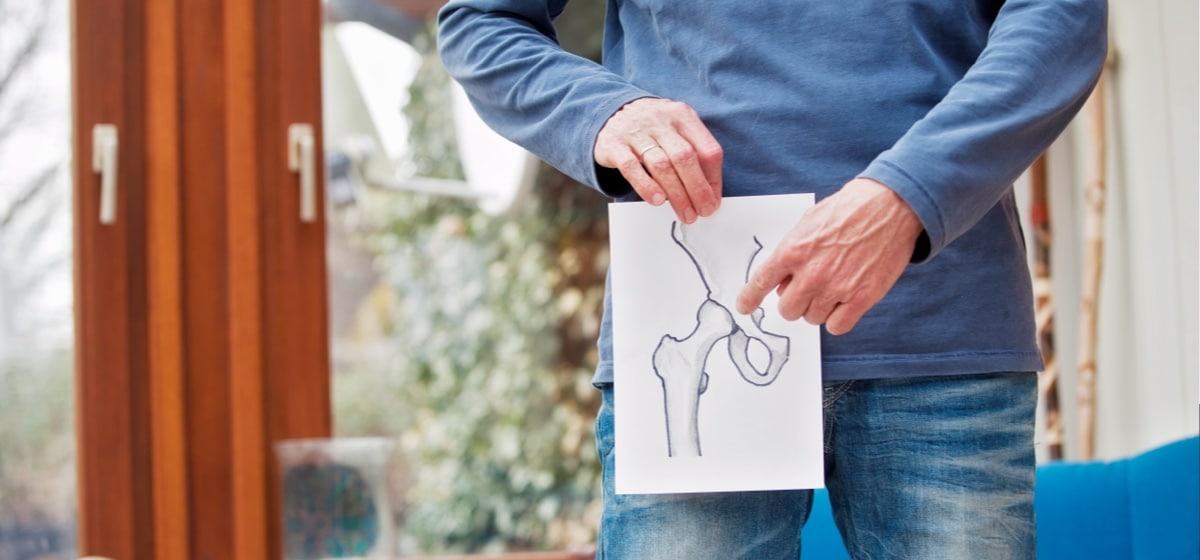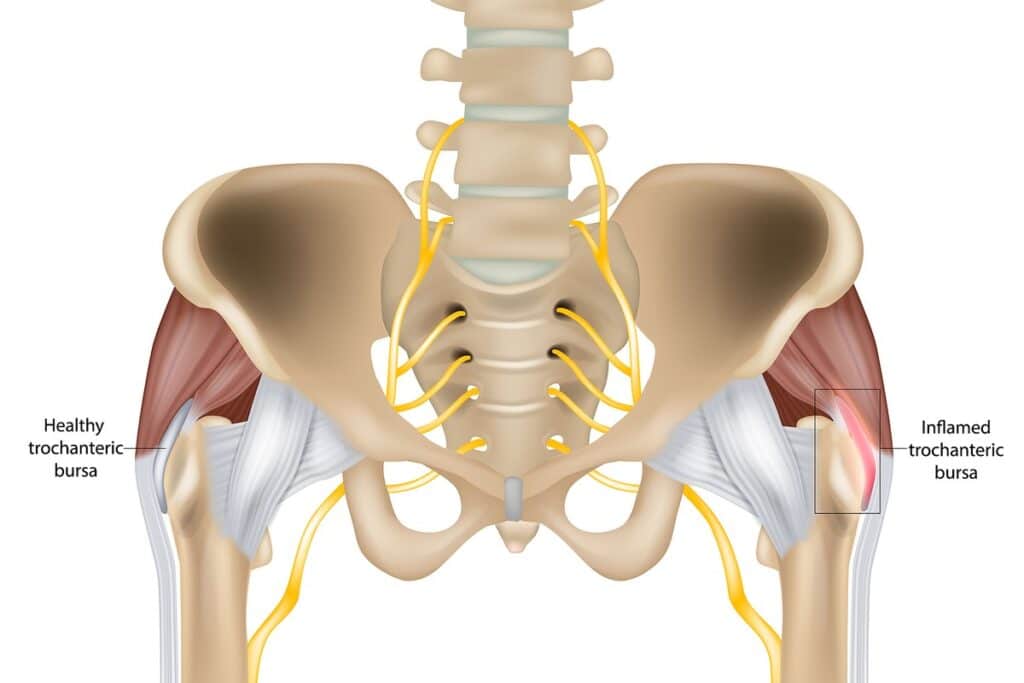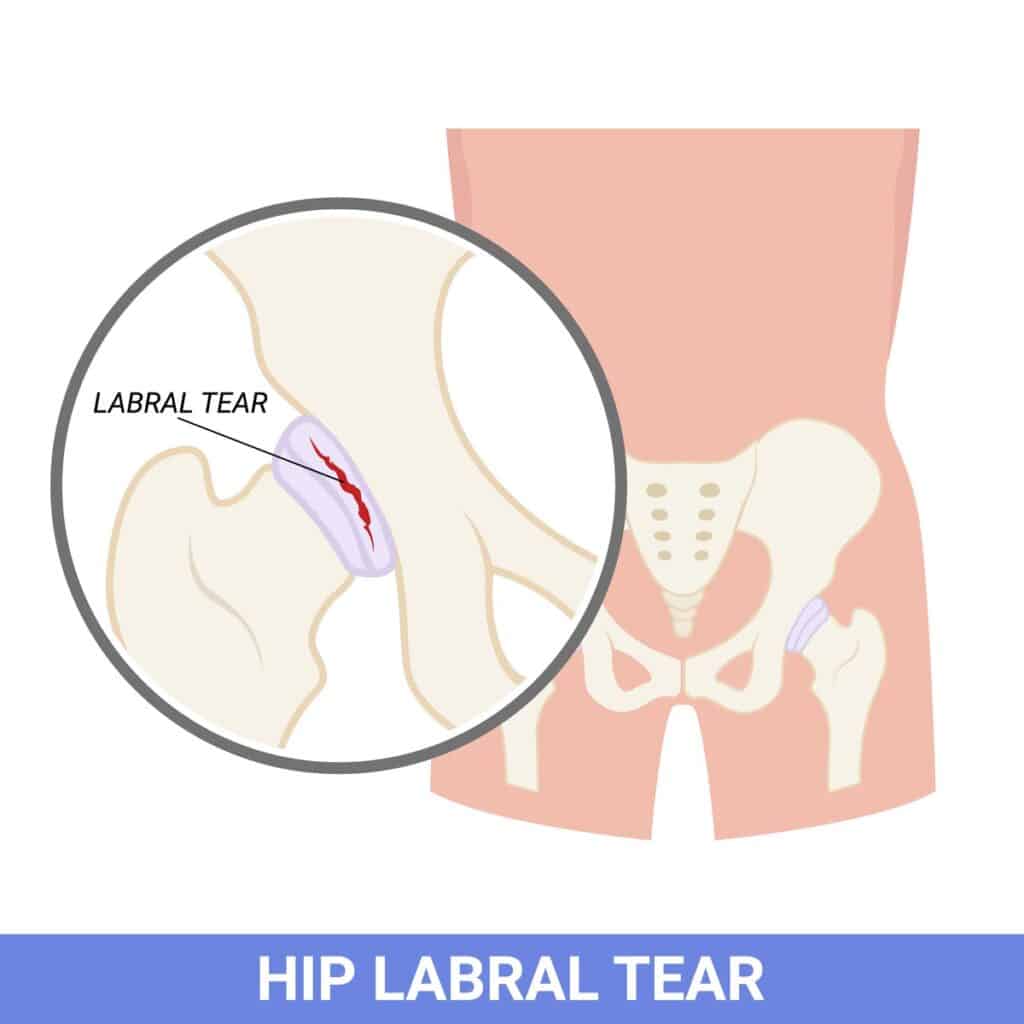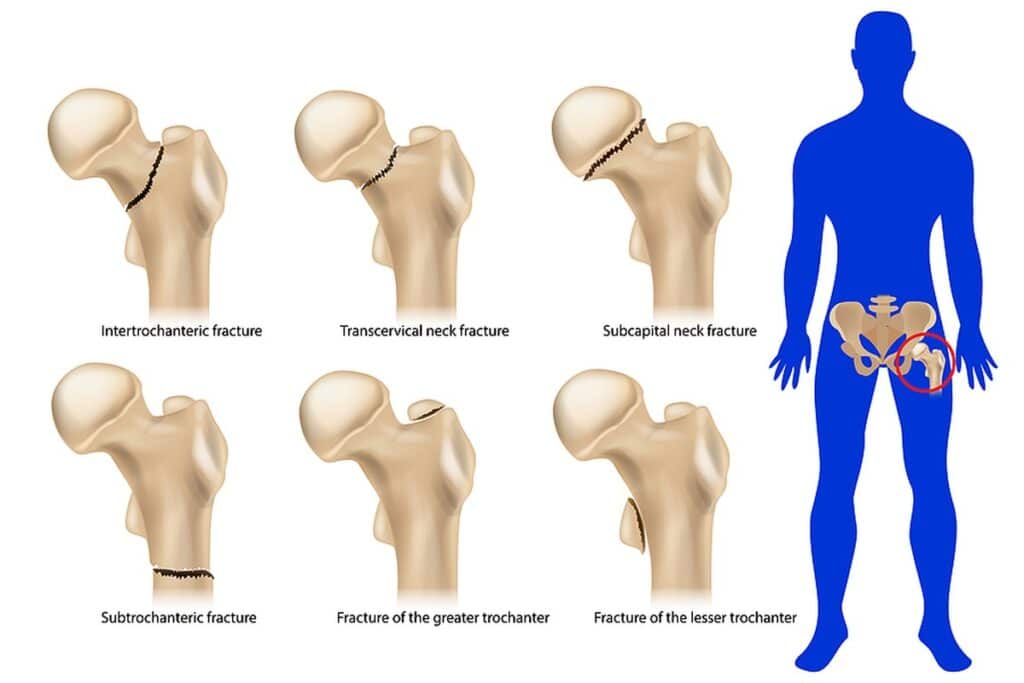
There are several common causes of hip pain and a few less familiar or rare causes. If you’re wondering what could be causing discomfort in your hip area and what might be helpful in alleviating it (like chiropractic care) keep on reading.
Hip pain can be a frustrating and debilitating problem that affects people of all ages and lifestyles. Some of the most common types of hip pain include osteoarthritis, bursitis, tendonitis, and strains.
A quick tip: “-itis” used in medical terminology means inflammation. Adding it to another word means inflammation of that area. For example: Bursitis, tendonitis, and arthritis.
“Ooh, that wasn’t good.” That’s the sound of a strain. Strains are muscle injuries likely resulting from sudden movements like those from sports injuries (baseball, soccer, kickboxing). It can also happen in a car accident—simply having a foot on the brake during an accident can cause muscle strains. Commonly strained muscles in the hip are the hamstrings, quadriceps (thigh), and adductors (groin). Pain from strains is usually worse with sudden movements that mimic the initial movement that caused the injury.
This is inflammation of the tendons that can cause pain and swelling. Snapping hip syndrome is a type of tendonitis at the hip that is due to the tendons either snapping suddenly or rolling over the knobby bones of the femur (trochanter). Tendonitis is usually worse with walking, getting up from sitting, or swinging your leg up. Overuse can typically cause tendonitis as well.
A bursa is the cushion that keeps bones and tendons from rubbing against each other. You have two in each hip. Sometimes a bursa will become inflamed and get larger, which can cause pain and even visible swelling.

If you have tendonitis, bursitis, or strained your hip, you might find the following treatment options helpful.
Multiple kinds of arthritis (Osteoarthritis, psoriatic arthritis, rheumatoid arthritis, and post-traumatic arthritis) can all cause wear and tear of the hip. Aging is, of course, the most common cause. You may also experience hip pain, difficulty walking, and difficulty lifting your leg.
There are three types of FAI (Femoroacetabular impingement)—a condition where extra bone creates friction over time and causes the hip to feel pinched or impinged: Pincer (overgrowth at the acetabulum or socket), Cam (irregularly shaped femoral head or bony bump) or Combined. Hip impingement is more common in men, and you may or may not notice symptoms (sometimes asymptomatic).
The labrum is the hip socket’s cartilage lining—like a gasket. A labral tear can result from trauma, repetitive motions, or structural problems (like the common causes of hip pain listed above: arthritis and impingement). You may notice clicking, pain, or stiffness from a labral tear.

Not everything is as straightforward as the above causes of hip pain. But that doesn’t mean you should ignore it.
This occurs when the femoral head (the rounded top of the femur that is the “ball” portion of the ball and joint socket) loses blood supply and can start to have osteonecrosis (bone death). This can be due to trauma, certain diseases like Sickle Cell, or fatty deposits in the blood. Legg-Calve-Perthes is a type of rare avascular necrosis seen in children.
Treatment: Avoid putting weight on the hip, take NSAIDS, pursue surgery
SCFE, for short, is the most common hip disorder in adolescents. It’s most commonly seen after periods of rapid growth during puberty, though the cause isn’t well known. Because hip bone fusion does not occur until around age 20-25, the ball part of the femur may slide off the femoral neck—the ball and socket joint will malfunction, and sudden hip pain and inability to bear weight will occur.
Treatment: Surgery is almost always performed within 24-48 hours of the event to prevent further slipping.
Inflammation and pain in the hip joint can be caused by germs infecting the area. This may happen after an invasive surgery like a total hip replacement.
Treatment: Antibiotics, antifungals, and antivirals may be prescribed. Taking NSAIDS prn for pain is also recommended.
After a fall or a car accident, you may experience a hip fracture. It’s particularly common in elderly folks and women. Sharp pain, bruising, swelling, and inability to put weight on that leg may indicate a fracture.
Treatment: Surgery to install pins while the fracture fully heals.

Dysplasia is typically a congenital condition that occurs when the hip socket is too shallow, making the hip easily dislocated. It’s typically identified in babies, but can impact teens and adults as well. A less severe case of dysplasia may not be caught early on, and can lead to arthritic changes.
Treatment: Babies and toddlers often wear a cast or brace.
Leg length discrepancy can occur as a growth issue, or due to a traumatic injury to one leg in youth (before one is finished growing). The unevenness causes more weight to bear on one hip, and can dramatically increase pressure and lead to hip pain.
Treatment: Chiropractic for pain management, heel lifts for shoes.
This is a rare cause of hip pain. Bone tumors or cancer can be primary (cancer starts in the hip) or metastatic (has spread to the hip from another cancerous area). Primary bone tumors are often sarcoma types. Leukemia can also cause hip pain.
Treatment: Surgical removal of primary bone tumor; radiation and/or chemo for metastatic tumors or leukemia.
Chiropractic can help with some of the above causes of hip pain. It’s vital to take an x-ray to identify what is happening inside before we do any adjustments—it can help identify arthritic changes, though it cannot show impingement or labral tears. Most of all, the structure of the hip gives us an idea of what we’re working with.
In some cases, you may experience referred pain in your back, even though it’s the hip that is the issue. (Shakira was wrong. Hips do lie sometimes.) For some patients, we may recommend you have your back or knee adjusted in addition to focusing on your hip. Everything is connected, and having full alignment is the best way to get your body functioning at its best.